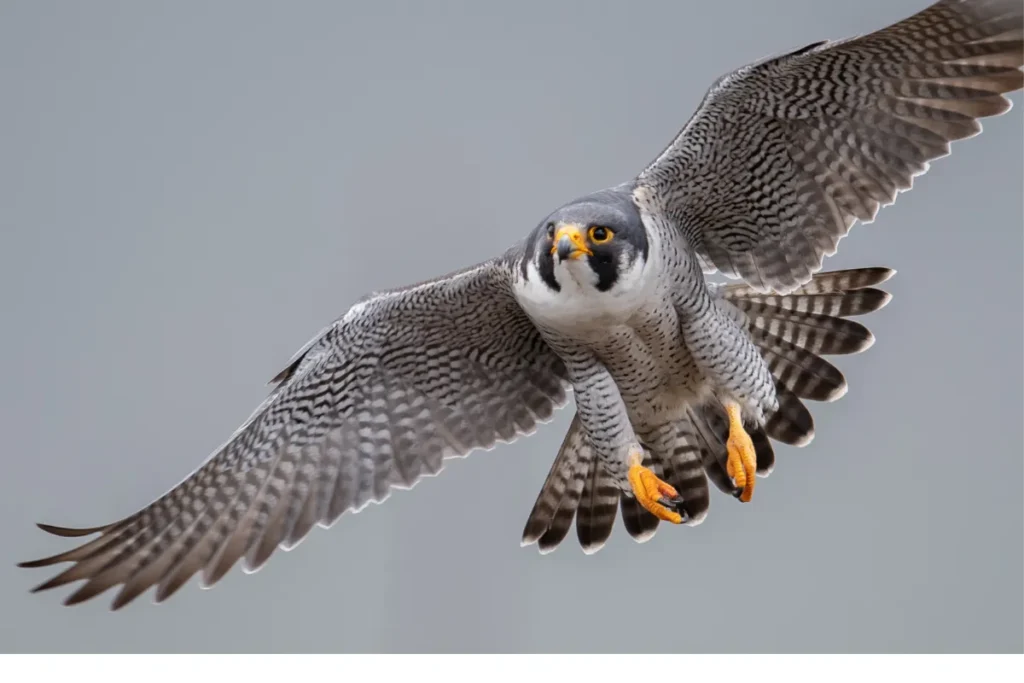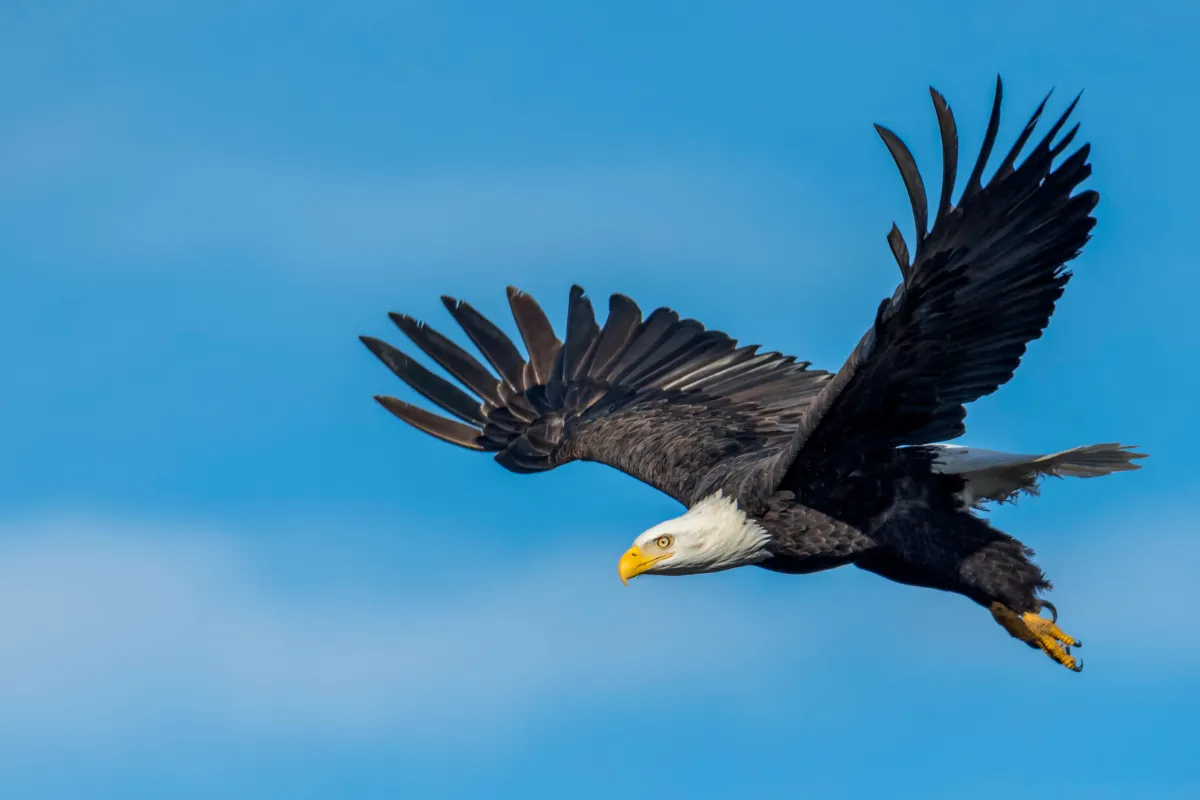Welcome to the thrilling world of aerial predators, where birds of prey rule the skies with grace, precision, and lethal prowess.
From the majestic eagle to the stealthy owl, these airborne hunters embody nature’s ultimate hunters.
In this article, we’ll take a mesmerizing journey into the realm of these majestic creatures, exploring their unique characteristics, hunting techniques, and the crucial roles they play in maintaining ecological balance.
The Mighty Eagles: Kings of the High Altitudes
Eagles, with their impressive wingspans and keen eyesight, reign supreme among aerial predators.
These majestic birds are symbols of power and freedom, soaring effortlessly through the vast expanse of the sky.
Their razor-sharp talons and powerful beaks make them formidable hunters, capable of taking down prey many times their size.
From the iconic bald eagle to the golden eagle, these regal birds command respect wherever they roam.
Falcons: Speed Demons of the Air

In the world of aerial acrobats, falcons stand out as the undisputed champions of speed.
With streamlined bodies and aerodynamic wings, these birds are built for one thing: speed.
Peregrine falcons, the fastest animals on the planet, can reach speeds of over 240 miles per hour when diving to catch their prey.
Their lightning-fast strikes leave their quarry with little chance of escape, making them fearsome hunters of the skies.
Owls: Silent Predators of the Night
While eagles and falcons dominate the daylight hours, owls rule the night with silent authority.
These nocturnal hunters are equipped with specialized adaptations that make them masters of stealth.
Their keen hearing and silent flight allow them to sneak up on unsuspecting prey with deadly accuracy.
From the eerie call of the barn owl to the haunting hoot of the great horned owl, these enigmatic birds evoke a sense of mystery and intrigue.
Hawks: Agile Hunters of the Forest
Hawks, with their keen eyesight and lightning-fast reflexes, are expert hunters of the forest canopy.
From the red-tailed hawk to the Cooper’s hawk, these birds are adept at navigating dense vegetation in search of prey.
Their talons, designed for gripping and tearing, make quick work of small mammals and birds.
With precision and finesse, hawks embody the art of aerial hunting in all its glory.
Vultures: Nature’s Clean-up Crew
While not traditional predators in the conventional sense, vultures play a crucial role in the ecosystem as scavengers.
These massive birds have highly acidic stomachs that allow them to consume carrion that would be toxic to other animals.
By cleaning up carcasses, vultures help prevent the spread of disease and maintain the health of their environment.
Despite their less glamorous reputation, vultures are essential members of the aerial community.
The Dance of Predation: Hunting Techniques in Action
Each species of aerial predator employs unique hunting techniques suited to its environment and prey preferences.
Eagles soar high above the landscape, scanning for movement with their keen eyesight before swooping down with deadly precision.
Falcons rely on speed and agility, using stoops and dives to catch their prey off guard.
Owls utilize stealth and silence, gliding silently through the night in search of small mammals and rodents.
Hawks employ a combination of speed and strategy, utilizing ambush tactics to catch their quarry by surprise.
Adapting to Change: Challenges Facing Aerial Predators
In today’s rapidly changing world, aerial predators face a myriad of challenges, from habitat loss to climate change.
As human activity encroaches on their natural habitats, these majestic birds are forced to adapt or perish.
Conservation efforts are crucial to ensuring the survival of these iconic species for future generations to enjoy.
Conclusion
In the vast expanse of the sky, aerial predators reign supreme as nature’s ultimate hunters.
From the mighty eagle to the agile falcon, these majestic birds embody the beauty and power of the natural world.
By understanding and appreciating their unique characteristics and hunting techniques, we can gain a deeper appreciation for the delicate balance of life in the air.
FAQs
Are all birds of prey considered aerial predators?
A1: While many birds of prey hunt from the air, not all of them are considered aerial predators. Some, like owls, are nocturnal hunters that primarily hunt on the ground or in trees.
How do aerial predators hunt at night?
A2: Nocturnal hunters like owls rely on their exceptional hearing and silent flight to catch prey in the darkness. Their keen senses allow them to locate and capture small mammals and rodents with deadly accuracy.
Are vultures considered predators or scavengers?
A3: Vultures are primarily scavengers, feeding on carrion rather than actively hunting live prey. However, they play a vital role in the ecosystem by cleaning up carcasses and preventing the spread of disease.
What is the largest species of eagle?
A4: The Philippine eagle holds the title of the largest eagle species in the world, with some individuals reaching impressive wingspans of over seven feet.
How can I help support the conservation of aerial predators?
A5: There are many ways to support the conservation of aerial predators, including supporting organizations dedicated to habitat preservation, reducing your carbon footprint, and advocating for policies that protect endangered species and their habitats.

